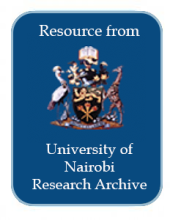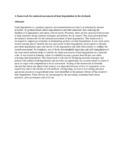/ library resources
Showing items 28 through 36 of 269.Some rural areas in Kenya are characterized by a combination of low
agricultural potential, high population density, poor market access, and un
conducive institutional setting. Such areas have been classified as suffering
Fragmentation, degradation and loss of natural habitats are now recognised as major threats to wildlife conservation and mobile pastoralism in East African savannas.
Women in most rural communities in Africa dominate farm activities in terms of labour
supply and management. Overall, Africa's performance in terms of agricultural
production and productivity remain inadequate and the region has failed to make progress
A programme of systematic inventory of the soil and land resources of Kenya was initiated in 1972. It aimed at the mapping of the high and medium potential areas at scale 1: 100, 000 and of the low potential areas at scale 1: 250, 000.
The adoption and adaptation of enclosures in the arid and semi-arid rangelands of sub-Saharan Africa is driven and
sustained by a combination of factors. However, reviews indicate that these factors cannot be generalized, as they
Land degradation is a gradual, negative environmental process that is accelerated by human activities. Its gradual nature allows degradation to
proceed unnoticed, thus reducing the likelihood of appropriate and timely control action. Presently, there are few practical frameworks to help
In the semi-desert zone of North Horr, northern Kenya, soil salinity reaches toxic levels, with extensive salt crusts at the surface. Environmental groups are involved in tree and shrub planting trials with the objective of stabilizing sand dunes and rehabilitating land.
In the early days of commercial penetration of East
Africa by the Europeans the present route to Uganda originating
from the Kenyan Coast town of Mombasa was rarely used
because of the difficulties experienced in sustaining long
Paginering
Land Library Search
Through our robust search engine, you can search for any item of the over 73,000 highly curated resources in the Land Library.
If you would like to find an overview of what is possible, feel free to peruse the Search Guide.






